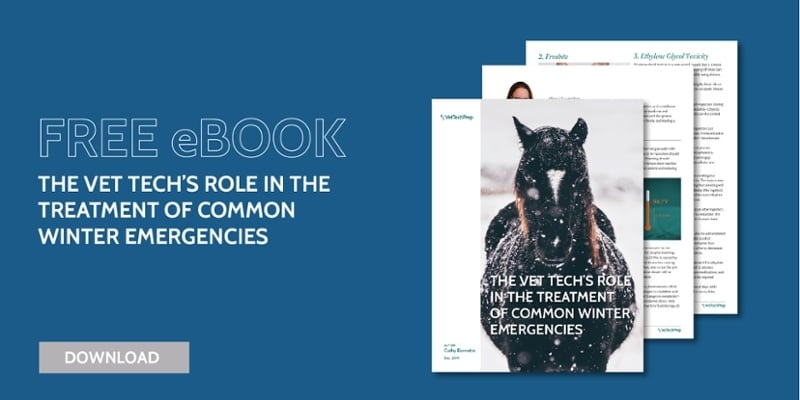
You’re working in a small animal practice when a pet presents for antifreeze ingestion. The client is frantic, the veterinarian is hurriedly assembling a treatment plan, and the receptionist is trying to get a deposit.
What is your role in caring for this patient?
Client Communication
In most practices, vet techs perform a significant portion of client communication as the pet is triaged, admitted, and hospitalized. You may need to present the client with an overview of treatment, present financial estimates, and relay other information from the veterinarian.
Important considerations for client communication in a suspected ethylene glycol toxicity case include the following:
- Treatment is often costly. Expenses of up to several thousand dollars are possible, depending on regional variation in veterinary costs. This may present a challenge for many clients, especially given the uncertain prognosis associated with ethylene glycol toxicity. Therefore, it is important that clients be provided with an estimate of costs as early as possible so that they can determine whether to go ahead with treatment.
- Prognosis varies, depending on how much time has elapsed since ingestion. Mortality rates in dogs may be as high as 70%, although dogs presented within 8 hours of ingestion (before the onset of azotemia) have a relatively good prognosis.(1) Mortality in cats is even higher, at 97%, unless treatment is initiated within 3 hours of ingestion.(1)

Emergency Treatment
If a pet is thought to have consumed ethylene glycol, the veterinarian will recommend a number of initial diagnostics and treatments. Common diagnostics include a CBC, serum biochemistry, and urinalysis. In-house ethylene glycol tests may also be utilized, if the ingestion occurred within the last 12 hours.(1)
The induction of vomiting is not typically recommended. Ethylene glycol is irritating to the gastrointestinal tract and most pets have already vomited prior to presentation. Additionally, ethylene glycol is rapidly absorbed; vomiting more than one hour after ingestion is not expected to be beneficial. Activated charcoal may be given, but its use is controversial and it may not offer any benefits.(1)
If the pet presents soon after ingestion, an antidote may be administered. Fomepizole is the preferred antidote in both dogs and cats. Dogs receive fomepizole at 20 mg/kg initially, followed by 15 mg/kg at 12 and 24 hours.(2) Fomepizole is less effective in cats; they are typically given 125 mg/kg fomepizole at presentation, followed by 31.25 mg/kg at 12, 24, and 36 hours.(1,2) The goal of fomepizole is to prevent the metabolism of ethylene glycol and reduce the creation of toxic metabolites.
Continued Care
Regardless of whether an antidote is administered, pets should be hospitalized for IV fluid therapy. Lactated Ringers is typically administered at twice maintenance rate.(2)
During fluid therapy, pets should be monitored for signs of fluid overload. Monitor the pet’s resting respiratory rate and auscult the lungs periodically, in order to ensure the early detection of pulmonary edema. If fluid overload develops, or a pet ceases to produce urine, furosemide or dobutamine therapy may be required.(1)
Acid-base imbalances and electrolyte abnormalities are common in pets with ethylene glycol toxicity. Therefore, blood tests are typically monitored throughout treatment.
In most cases, the following parameters are assessed every 12 hours:
- Urine production
- Serum BUN and creatinine
- Blood pH
- Serum bicarbonate
- Ionized calcium
- Electrolytes(2)
Discharging Patients
In general, pets remain hospitalized until clinical signs have resolved and until 24 hours after the resolution of azotemia and acid-base abnormalities.(1)
Some pets experience lifelong renal insufficiency after ethylene glycol toxicosis. Repeat serum biochemistry and urinalysis testing may be recommended at periodic intervals after discharge, to assess for the presence of long-term kidney dysfunction and provide follow-up monitoring.
If permanent kidney damage is suspected, the pet may be discharged on a prescription renal support diet and/or the owner may be instructed to administer subcutaneous fluids at home.
References
- Richardson, JA, Gwaltney-Brant, SM. 2003. Ethylene Glycol Toxicosis in Dogs and Cats. Clinician’s Brief.
- Brownie, CF. 2010. Managing Ethylene Glycol Toxicity. DVM360.




